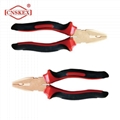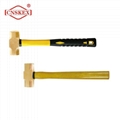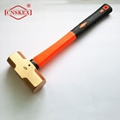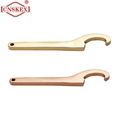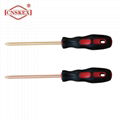| Model: | - |
|---|---|
| Brand: | - |
| Origin: | - |
| Category: | Industrial Supplies / Tools / Hand Tools |
| Label: | Non-sparking tool , Non Sparking Wrench |
| Price: |
-
|
| Min. Order: | - |
| Last Online:28 Aug, 2023 |
Applications Of Non-Sparking Hand Saw :
Non-sparking hand saw for use in petrochemical, grain production (explosive-dust), utilities, and hazmat applications.
Non-magnetic hand saw for use in MRI/NMR, nuclear products, electronic manufacturing, and other sensitive equipment.
Corrosion Resistant hand saw for use in desalination plants, chemical/paper manufacturing, and shipyards.
When selecting the right alloy for your non-sparking, non-magnetic safety tools, you have two choices: copper beryllium tools or aluminum bronze tools.
The Factors to choose the material:
Different zones require certain alloys.
Our copper beryllium tools fulfil ATEX requirements for work in a number of zones, including 0, 1, and 2 (for gas, mists, or vapors); 20, 21, and 22 (for dusts); and M1 and M2 (mining). aluminum bronze tools are appropriate for work in zones 1 and 2, and 21 and 22. Beryllium copper tools can handle more environments.
Hardness
Our aluminum bronze alloy tools have a hardness of 25HRC. If your application requires a tool with higher hardness rating, copper beryllium equipment, with an HRC of 35, is a good choice.
Beryllium copper tools are extremely durable, due to the alloy’s tensile strength and high hardness. Aluminum bronze tools, because of their chemical composition, are not as durable as copper beryllium equipment.
Magnetic properties
Aluminum bronze equipment features low magnetism due to its minimal ferrous composition. Beryllium copper tools have a more non-ferrous composition, so this equipment is safer for applications that require non-magnetic properties
Application remarks:
Non sparking tools are softer than usual tools.
The operation with these tools has to be carried out with accuracy and care.
Overstraining has to be prevented.
Only using spark-free tools as a protection measure in fi e endangered and explosion endangered areas is not enough. Please consider the instructions of local health and safety regulations for the protection of employees and accommodation.
